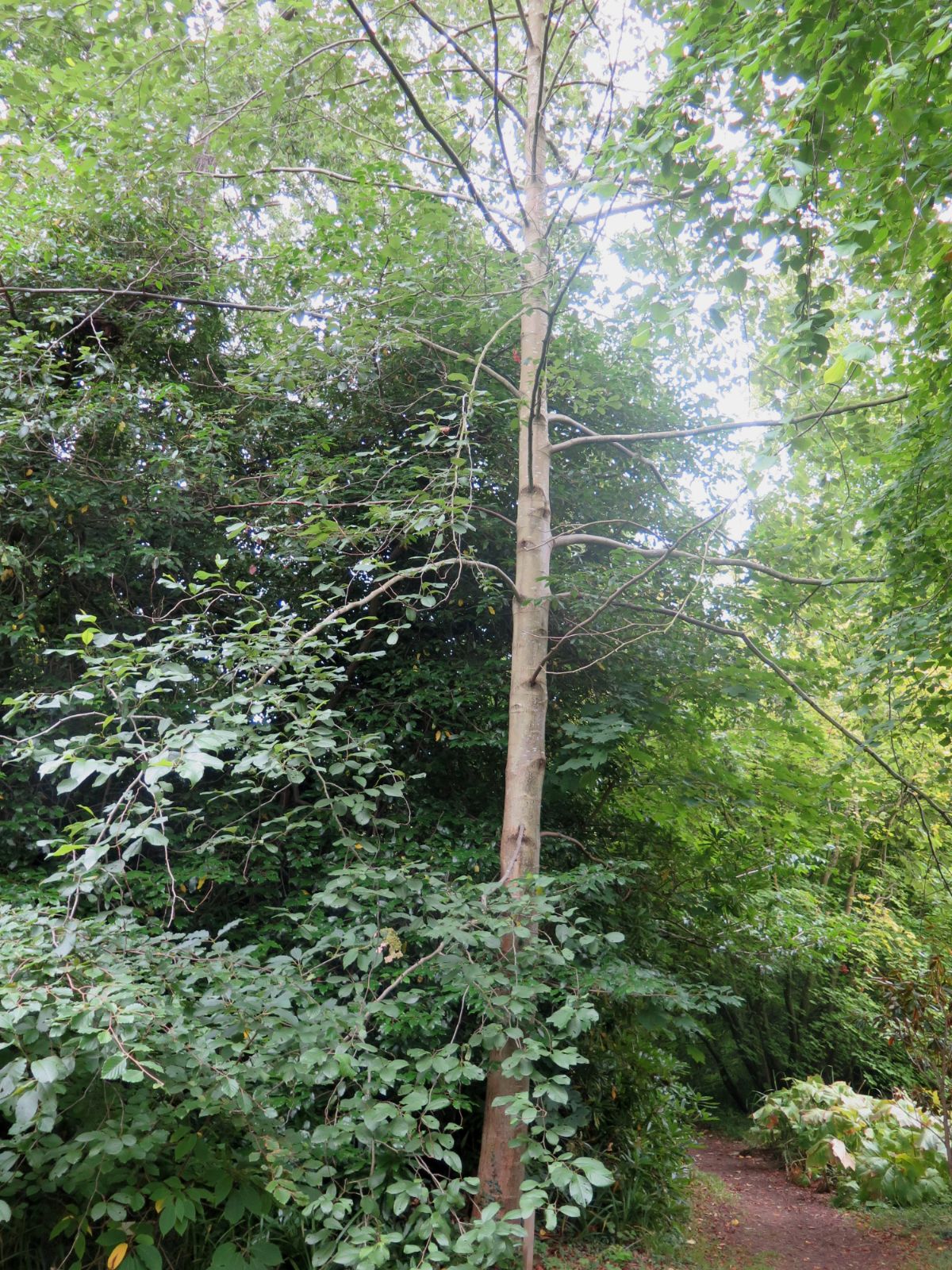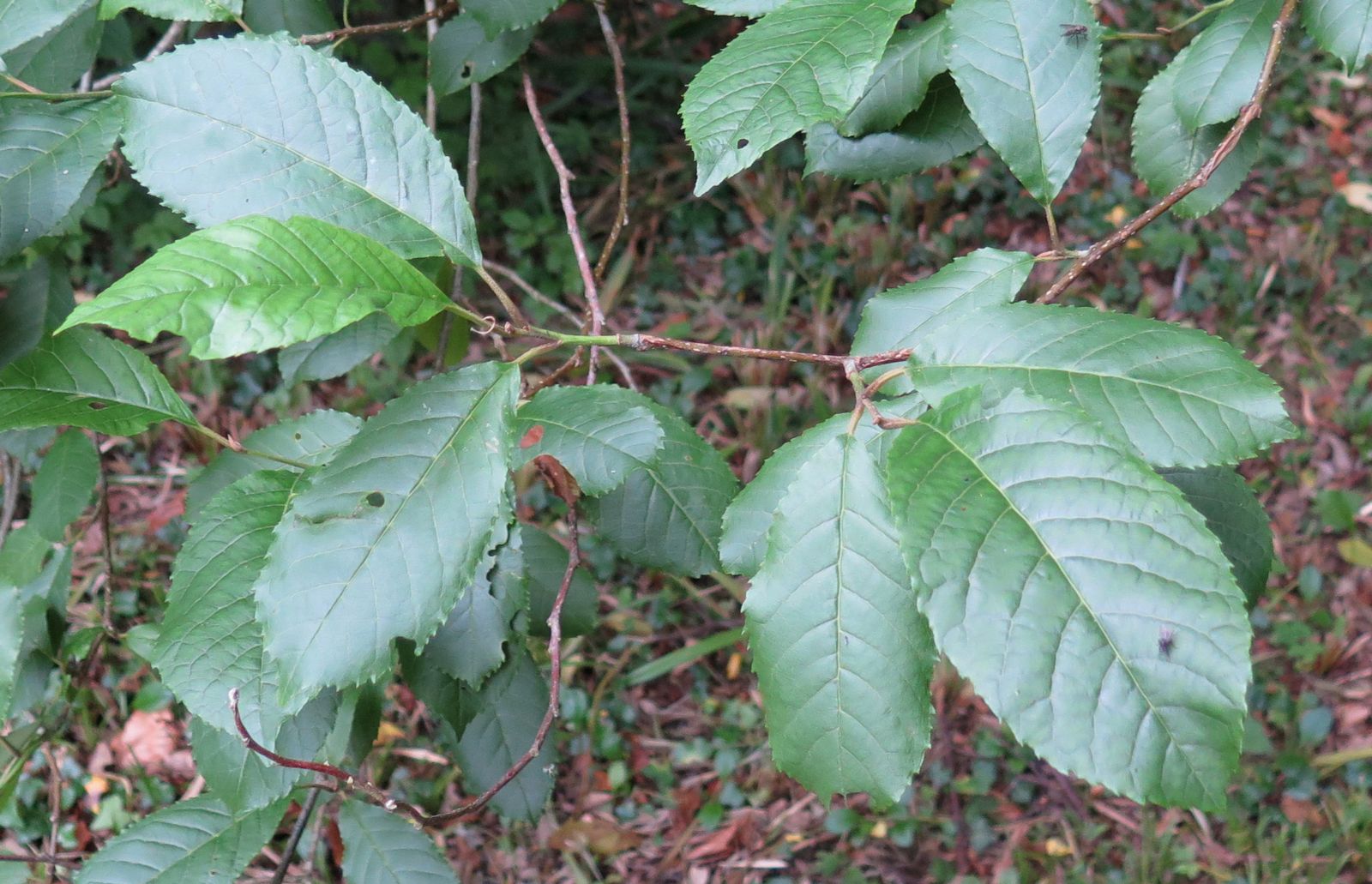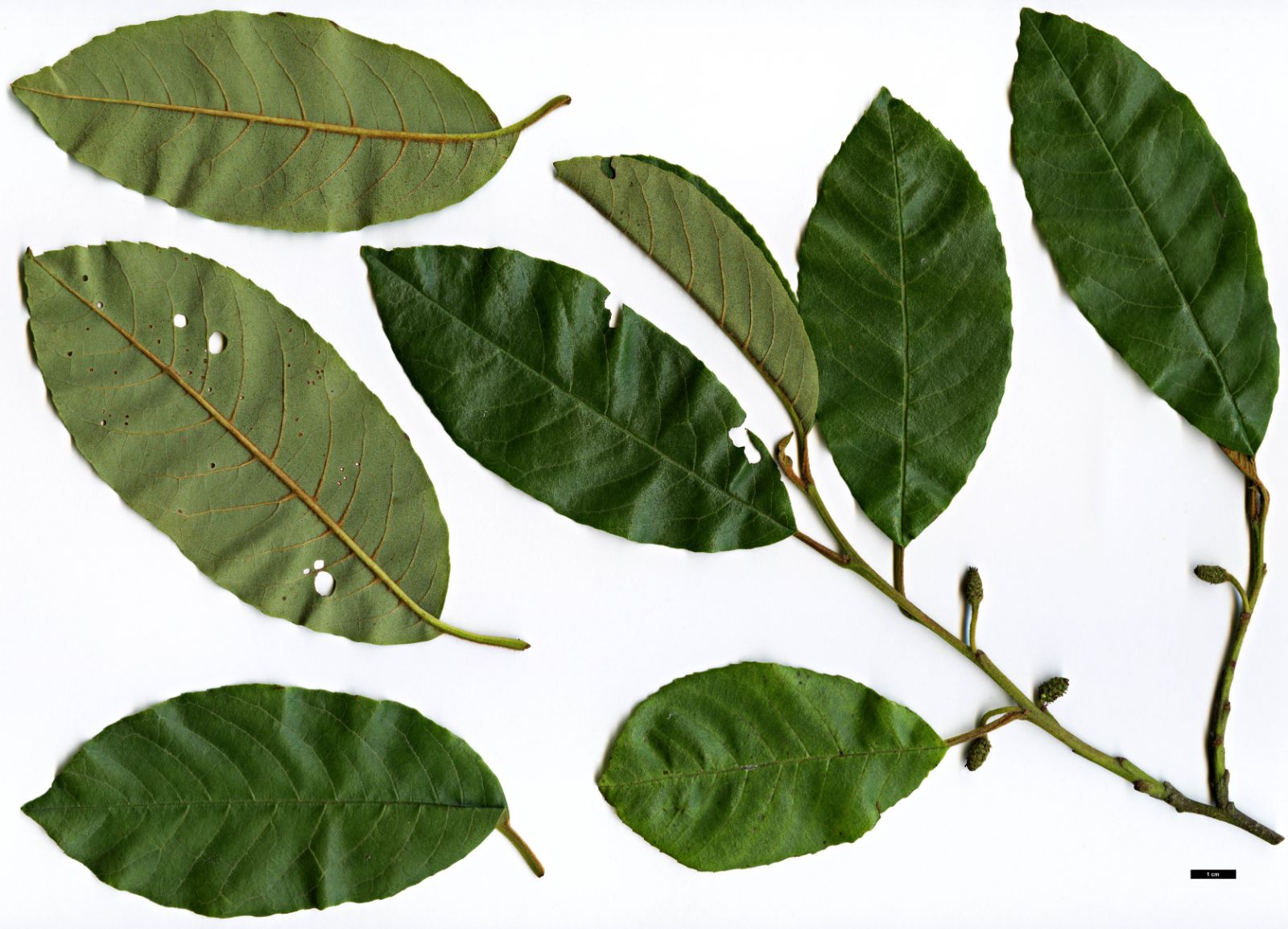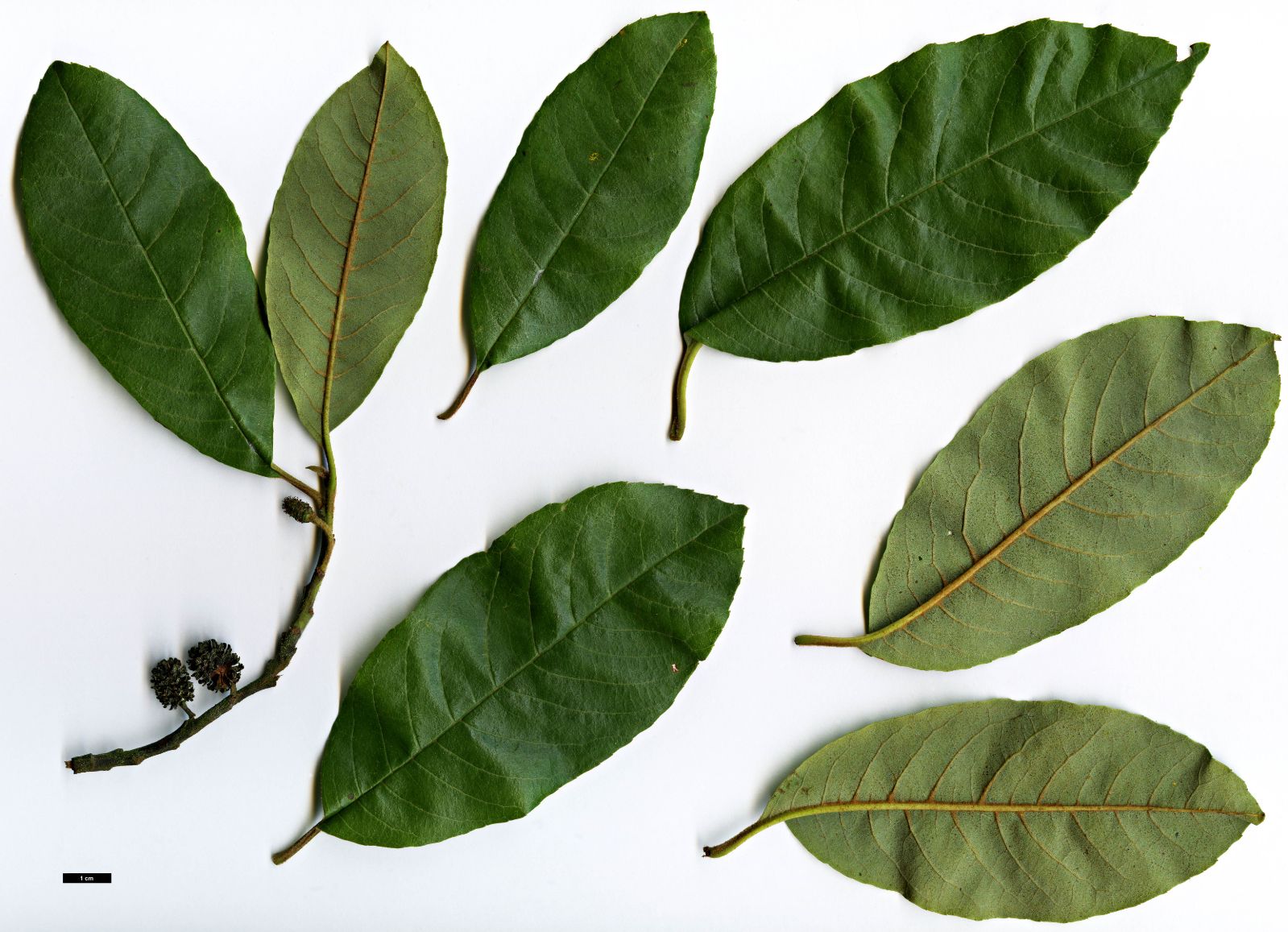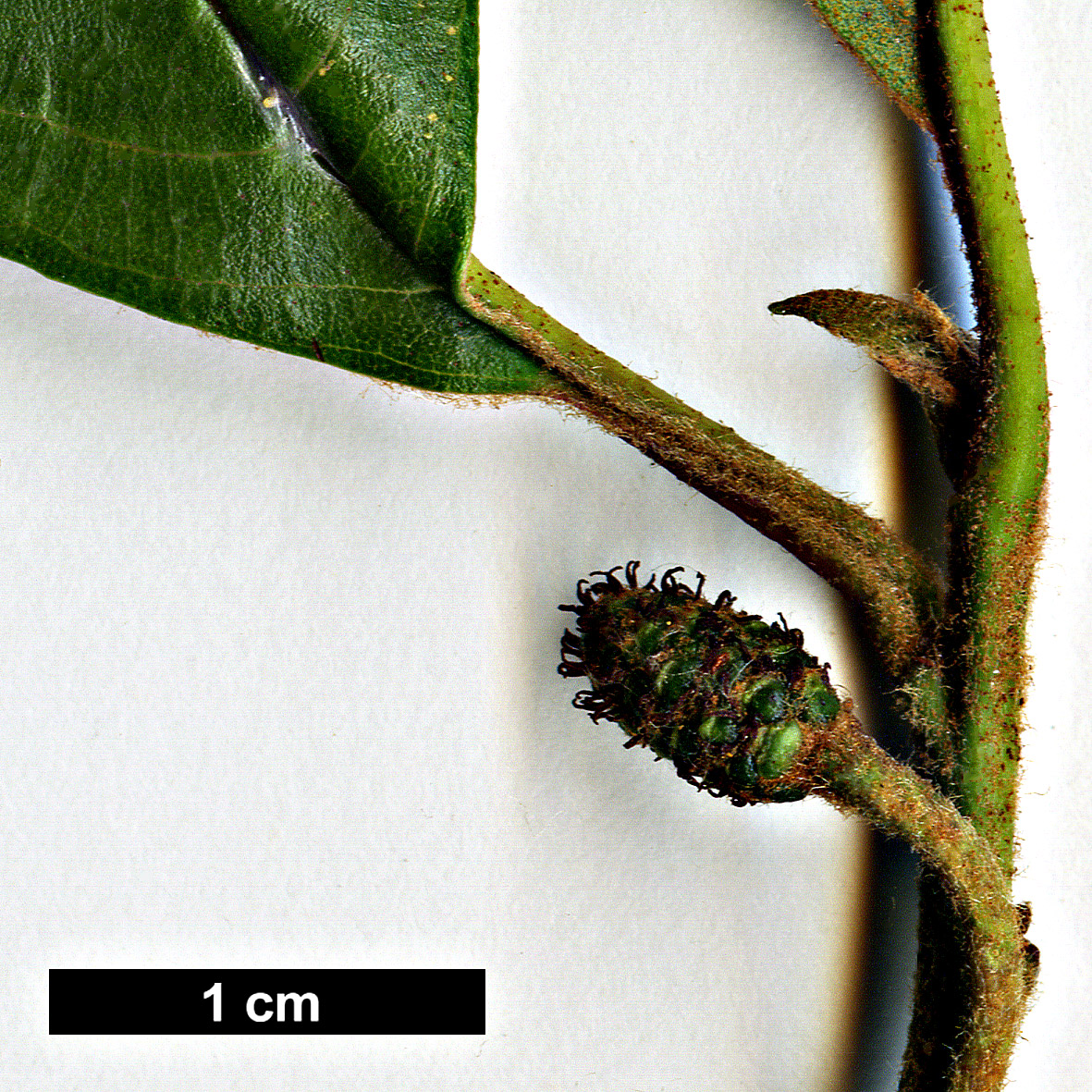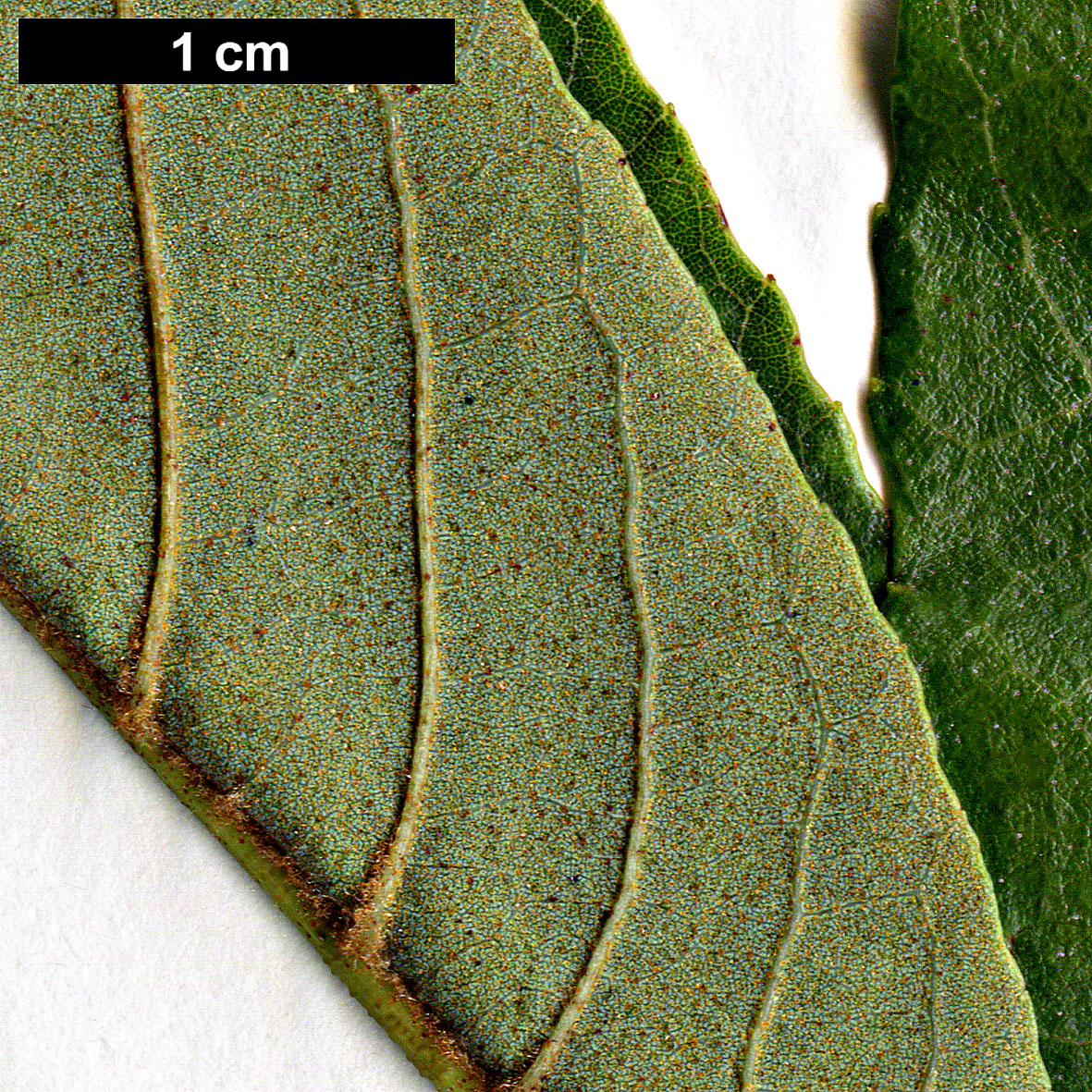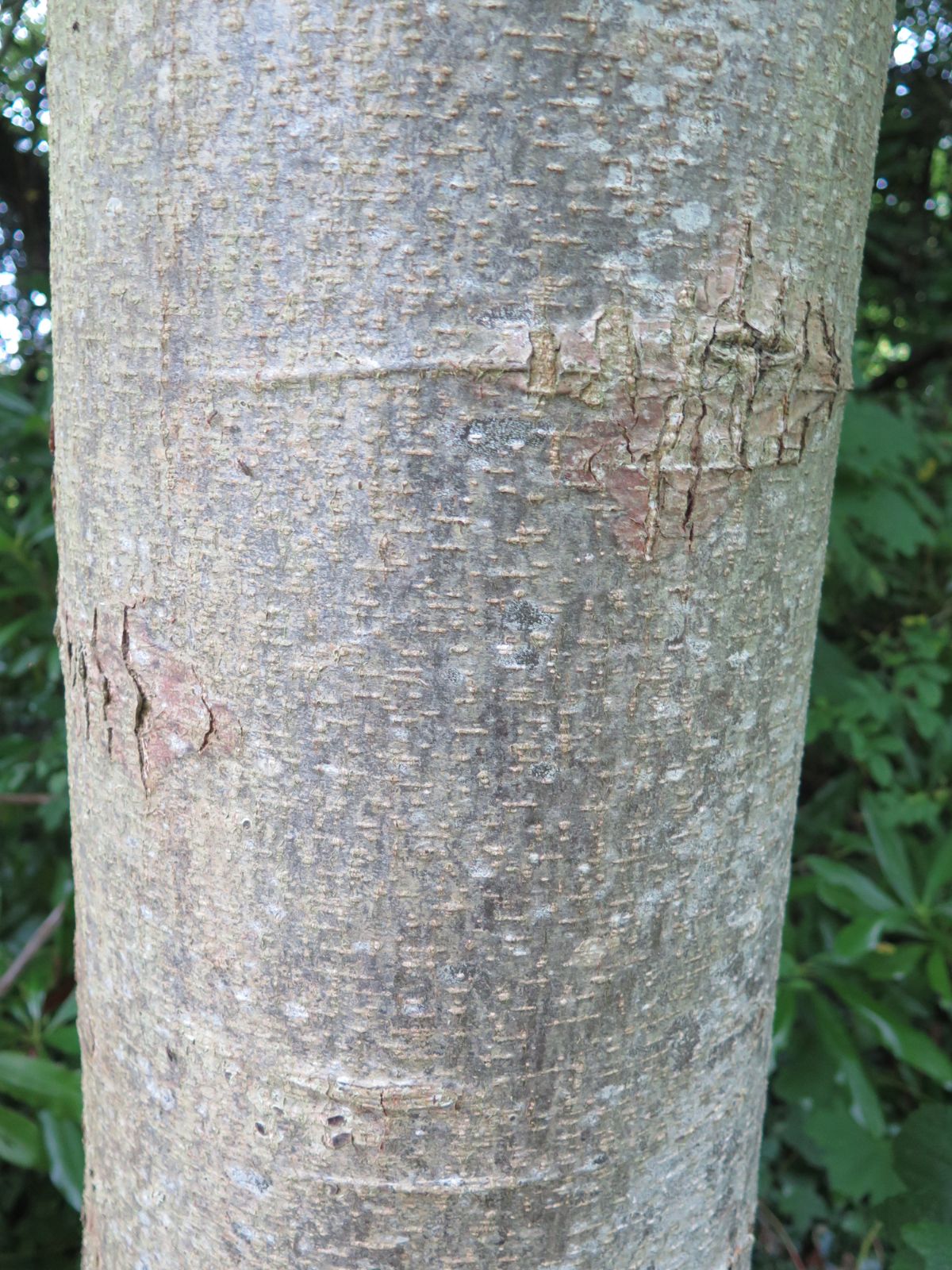Alnus ferdinandi-coburgii
Sponsor
Kindly sponsored by
a member of the International Dendrology Society
Credits
Tim Baxter & Hugh A. McAllister (2024)
Recommended citation
Baxter, T. & McAllister, H.A. (2024), 'Alnus ferdinandi-coburgii' from the website Trees and Shrubs Online (treesandshrubsonline.
Genus
- Alnus
- Subgen. Alnus, Sect. Cremastogyne
Synonyms
- Cremastogyne ferdinandi-coburgii (C.K.Schneid.) Czerep
Other taxa in genus
- Alnus acuminata
- Alnus alnobetula
- Alnus betulifolia
- Alnus cordata
- Alnus cremastogyne
- Alnus djavanshirii
- Alnus dolichocarpa
- Alnus × elliptica
- Alnus × fallacina
- Alnus fauriei
- Alnus firma
- Alnus formosana
- Alnus glutinosa
- Alnus hirsuta
- Alnus incana
- Alnus inokumae
- Alnus japonica
- Alnus jorullensis
- Alnus lanata
- Alnus lusitanica
- Alnus maritima
- Alnus matsumurae
- Alnus × mayrii
- Alnus nepalensis
- Alnus nitida
- Alnus oblongifolia
- Alnus orientalis
- Alnus pendula
- Alnus rhombifolia
- Alnus rohlenae
- Alnus rubra
- Alnus serrulata
- Alnus serrulatoides
- Alnus sieboldiana
- Alnus 'Sipkes'
- Alnus × spaethii
- Alnus subcordata
- Alnus trabeculosa
Upright tree to 20 m tall. Bark smooth, dark grey. Branches grey; branchlets red-brown, densely red-brown pubescent. Buds with two glabrous scales. Leaves ovate to obovate-oblong, rarely lanceolate, 5–16 × 3–7 cm, apex abruptly acute, base cuneate, margins slightly wavy with small forward-pointing mucronate teeth; semi-craspedodromous, 12–17 lateral veins on each side of the midvein, veins densely yellow-hairy with tufts in axils; mid-green, glossy above, pale green, matt below; petiole 1–2 cm, densely yellow-pubescent; Female inflorescence solitary in leaf axils, globose or oblong, 1.5–3 × 1–1.5 cm; peduncle thick, erect, 1–1.5 cm. Fruit evenly 5-lobed, 3–4 mm wide; nutlet narrowly elliptic, c. 3 mm, with thin papery wings one third as wide as nutlet. Flowering May to July; fruiting August to September. (Iwatsuki, Boufford & Ohba 2006; T. Baxter pers. obs.).
Distribution China Guizhou, SW Sichuan, Yunnan
Habitat Forests on mountain slopes, streamsides. 1500–3000 m asl.
USDA Hardiness Zone 6
RHS Hardiness Rating H6
Conservation status Least concern (LC)
This Chinese alder was discovered by Camillo Schneider on his expedition to Yunnan in 1914 with Heinrich Handel-Mazzetti. Schneider later named it in honour of Tsar Ferdinand I of Bulgaria (1861–1948, abdicated 1918), who was a keen botanist and gardener. At an official function the late Viscount (Matthew) Ridley (1925–2012) happened to find himself sitting next to Ferdinand’s grandson, Tsar Simeon II (who ruled under a regency 1943–1946; elected Prime Minister of Bulgaria 2001–2005, as Simeon Saxe-Coburg-Gotha), and mentioned Ferdinand’s interest in plants. ‘Yes, he was a great botanist’ was the reply; ‘He was always in the mountains in full dress uniform on an enormous white horse, with a sword in one hand and a trowel in the other!’ (M. Ridley, pers. comm. to John Grimshaw).
Alnus ferdinandi-coburgii makes an upright tree to 20 m tall with ascending branches. It is of some ornamental merit with glossy leaves and should grow well in most soil types throughout temperate regions, with the potential to become a large tree. It is unclear, though, when A. ferdinandi-coburgii was first introduced, and it remains a relatively rare species in cultivation. One successful and seemingly hardy introduction was by Charles Howick (H 1660) from 2150 m in the Luoji Shan, Sichuan in 1992 and a tree raised at Howick Hall was measured in 2019 at 18 m × 119 cm (The Tree Register 2024). It is also found in a handful of other sites in the UK including Sandling Park, Westonbirt, and the Sir Harold Hillier Gardens.
This species is closely related to Alnus cremastogyne and A. lanata and clearly belongs to the same group, Section Cremastogyne (Sargent 1916), all of which have solitary female fruit in leaf axils, three styles, and obovate leaves terminating sharply in an acute apex. A. ferdinandi-coburgii is readily distinguished in its fruit borne on short erect peduncles, relatively wide leaves, and with very narrow seed wings. A. lanata is densely white-buff hairy and A. cremastogyne is more or less glabrous but otherwise similar with pendulous fruit on long peduncles, narrower leaves and seeds with much broader seed wings. A. ferdinandi-coburgii and A. lanata are both tetraploid, and A. cremastogyne is either tetraploid (Ren & Liu 2006) or diploid (H. McAllister pers. obs.).

